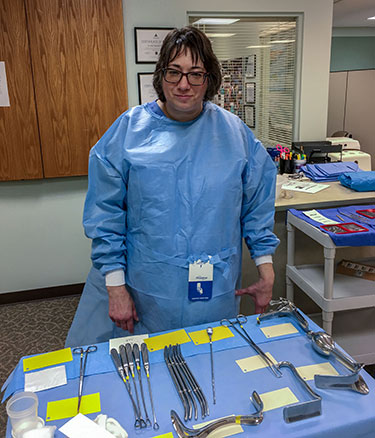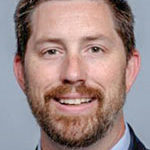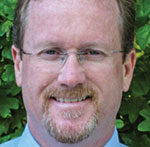
By Joshua Phelps
The Scene staff
St. Louis Community College’s heavy focus on health-care training seems to fall right in line with its 10th annual St. Louis Workforce Report, which was released in August.
Results showed that the metro area needs more skilled workers in health care, information technology and finance.
“There’s more jobs open than people looking for work,” said Nelson Hart, associate vice chancellor for STLCC Workforce Solutions. “This is the first time that this has happened (since the college started compiling the reports).”
The college partnered with the Missouri Department of Economic Development to look at job postings, demographics and other factors. It surveyed 1,250 companies in health, information technology and finance.
“(We asked them), ‘Are people qualified? Are they prepared? And if they’re not, where are the gaps in the skills?’” Hart said.
Shortcomings of job applicants included poor work habits, lack of critical thinking and problem solving, lack of teamwork or collaboration skills and lack of communication and interpersonal skills.
“They’re looking for people with soft skills,” said Bill Hubble, district division dean of academic affairs for health sciences.
“(That means) the ability to show up for work on time, to be dedicated, to be compassionate, to be able to communicate, work as a team, to collaborate, to be able to troubleshoot problems and issues, to be able to do critical thinking.”

STLCC has compiled workforce reports every year since 2008. Each has covered different fields.
The college is taking a major step toward training more employees for health-care careers by building a new Center for Nursing and Health Sciences on the Forest Park campus. It’s expected to be completed next spring.
“(The idea) is to offer a state-of-the-art building to attract more people to come into the community college, to get their training and their education so that they can help fill some of these much-needed vacancies,” Hubble said.
Students who will take classes in the new building include Martha Fortunato, 56, who’s majoring in surgical technology.

“I worked in health-care information management before, so I was familiar with a lot of health-related things,” she said. “I guess I had a high interest in surgery and thought it would be interesting.”
The shortage of skilled workers is nothing new. It’s been listed as a problem in STLCC workforce reports for the past four years.
“When this report started, and the college first started producing this, it was the exact opposite,” Hart said. “Unemployment was very high, and there were six applicants at that time for every job that was open.”
That situation has changed in fields such as nursing, which has a nearly 20 percent vacancy in the St. Louis area.
“You have a lot of people who have been in the nursing field for a while who are retiring,” Hart said. “And they’re just deciding they don’t want to be in nursing anymore, and they’re moving on.”
CNN Money published an article May 8 saying the U.S. will need to hire as many as 2.3 million health-care workers by 2025 to offset an aging workforce.

As many as 400,000 new nursing assistant positions and nearly 51,500 new nurse practitioner jobs will open due to retirements, according to global health-care staffing consultancy Mercer.
Hubble has gathered data from the Missouri Hospital Association and found that 38 hospitals in the St. Louis area were facing applicant shortages in nursing.
“There are currently, as of this report, 3,421 openings for nurses, which would be an 18 percent vacancy, so there are thousands of jobs in nursing,” he said.
The new Center for Nursing and Health Sciences will house clinical laboratory technology, dental assistance and hygiene, diagnostic medical stenography, respiratory care, surgical technology and other health-related programs.
“Our enrollments have been stable,” Hubble said. “We have not seen a drop in enrollments in most of the health-science programs.”
But that isn’t stopping STLCC from actively recruiting more students in health-care fields and trying to get them into programs faster.
“That’s something that the college has been working on, and it has a plan in place to increase the number of nursing students, almost by 50 percent,” Hart said. “There is a demand, a strong need for this kind of graduate.”
Beyond classes, the college is helping students get internships and practicums, which are limited forms of internships.
“The demand for health professionals is extraordinarily good right now,” Hubble said.
“I would suggest that the shortage that we’re seeing now will probably be here for quite some time, and for students looking for opportunities in the health professions, I would encourage them to look at all of the health-care professions.”covered different fields.
